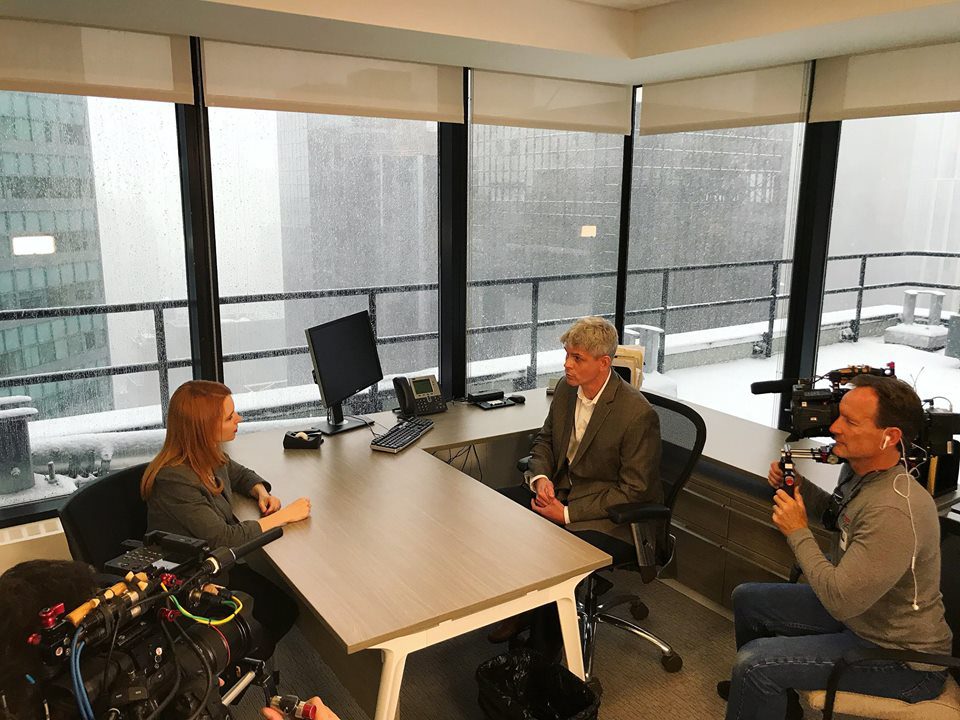
Our Field Reporter Tamara Krinsky visited the data analytics company FICO. They discussed cybersecurity and what sort of impact it’ll have on how we deal with our money- and how well it’s protected. While we learned a lot in the episode, we still had more questions. We followed up with Chief Analytics Officer, Scott Zoldi to learn more about cybersecurity, digital fraud, and what they’re working on next.
TWT: Data breaches and the security of cryptocurrency are hot-button issues at the moment. What is FICO doing to take measures against cyber-crime?
SZ: We are in an arms race with the criminals when it comes to data breaches and cybersecurity. This means we have to continuously adapt and use more powerful analytics. We’ve been adapting our AI to improve cybersecurity. In addition, we believe that a strong cybersecurity defense begins by really understanding your strengths and weaknesses…Our FICO Score program can predict the likelihood your business will suffer a major data breach in the next year. Businesses can use this score to benchmark their cybersecurity posture against other firms and over time.

How does the FICO Enterprise Security Score work?
It’s based on billions of cyber risk indicators about a business that are monitored at Internet scale. We built it using machine learning to interpret the network hygiene practices of thousands of previously breached organizations. Through this analysis, we identified the signals that a business is at risk of data loss. Because the data the Enterprise Security Score analyses is so important, we allow businesses to curate their assets, in order to ensure the score is based on the right data.
TWT: How quickly do “fraudsters” (hackers, identity thieves, etc.) evolve their tactics?
SZ: Fraudsters evolve constantly. Their business is taking your money, and they are technically advanced. This is why we are in an arms race with them — both sides are constantly upping the ante for analytic intelligence. A fraud system that can’t evolve and adapt will be obsolete very quickly. Our analytic systems adapt with every transaction a cardholder makes, which allows the transaction to update profiles of knowledge of a consumer’s transaction behaviors and allows assessment of fraud vs. non-fraud. These analytics have been refined and evolved over more than 25 years to keep up with fraudsters, based on more than 100 patents in fraud analytic algorithms/methods.
TWT: There are plenty of stories of learning AIs being exposed to the internet and immediately becoming corrupted. What is your company doing to prevent such scenarios, or do such measures defeat the purpose of a “learning” AI?
SZ: Criminals are leveraging machine learning in their pursuit of crime and have considerable assets to collect data and measure how AI systems respond. This allows them to steal expertly and circumvent AI systems — a classic example is in money laundering where it is estimated that only about 1% of money laundering is currently detected. We are also aware of criminals utilizing machine learning to try to learn models used by banks and others to protect customer data and assets. We at FICO have created a set of technology called defensive AI. These models understand that adversary “learning AI” is trying to understand and replicate their behaviors, and as such, they mislead “learning AI” by adjusting the output, including indicators that, if used in targeted attacks, would indicate that the system is being monitored and gamed. These machine learning “breadcrumbs” are incredibly easy traps to lay for “learning AI” and can be then aggressively targeted.
 TWT: What’s the company’s next big project?
TWT: What’s the company’s next big project?
SZ: We have been pioneers in researching and developing techniques for what is known as explainable AI. Most AI systems today are “black box” systems — they are very good at analyzing data, but it’s hard to know how they are reaching the answers they’re reaching. That is a problem when you move into regulated areas like credit risk, where consumers have a right to know how a decision was reached. Now, in addition to developing these “xAI” systems, we are making explainable AI toolkits available to developers through our FICO Analytic Workbench. This will be a real breakthrough for people who need to understand what’s going on inside their machine learning and AI models.







